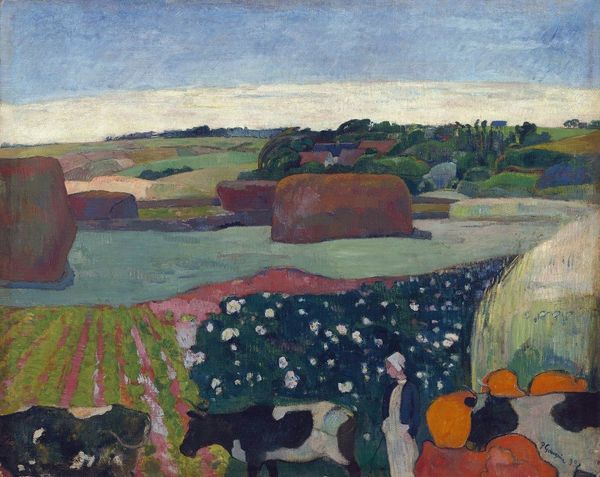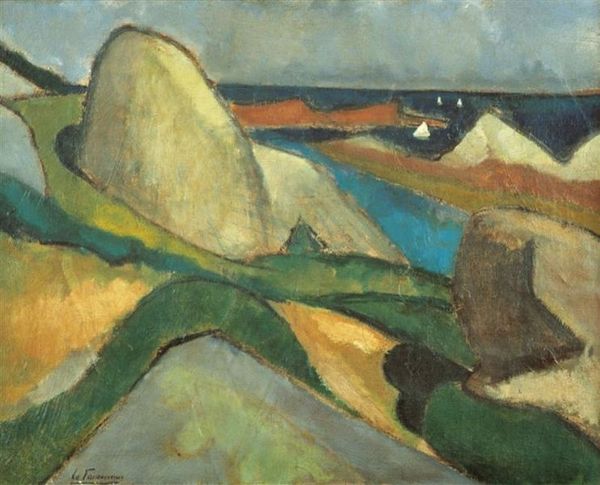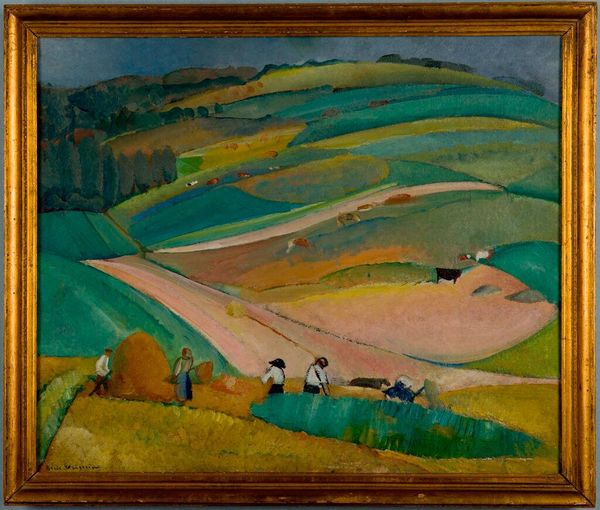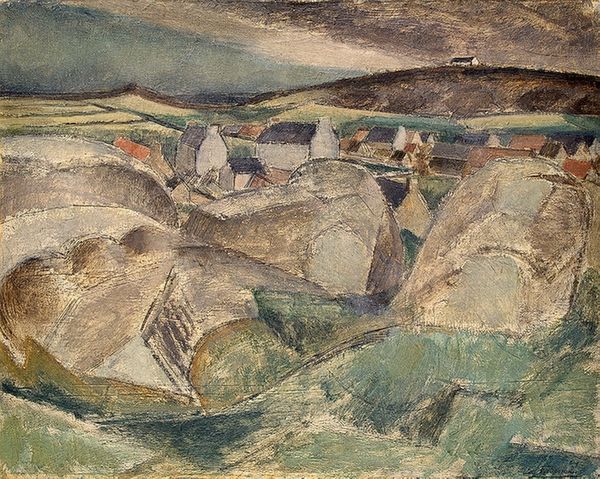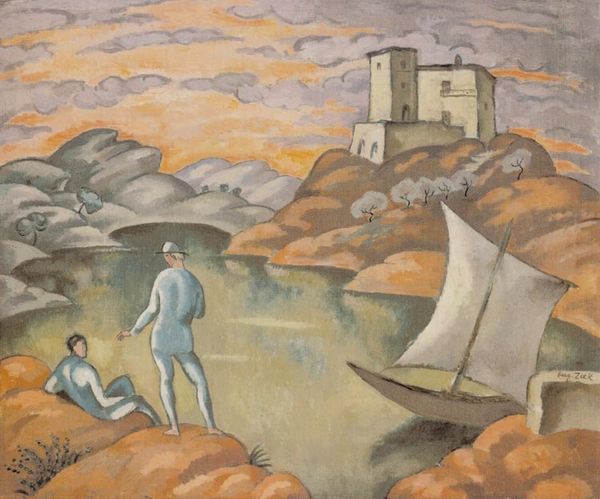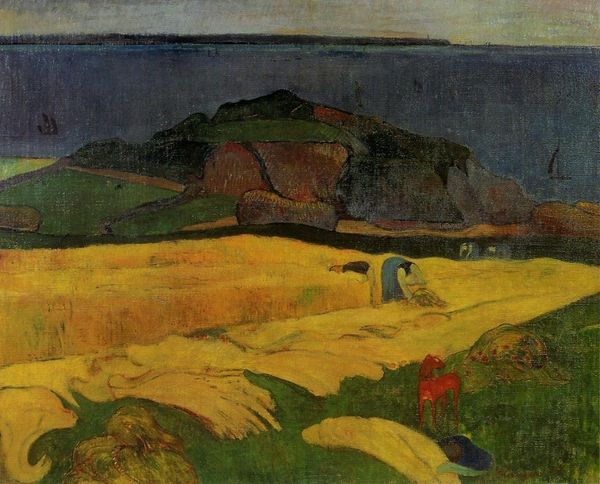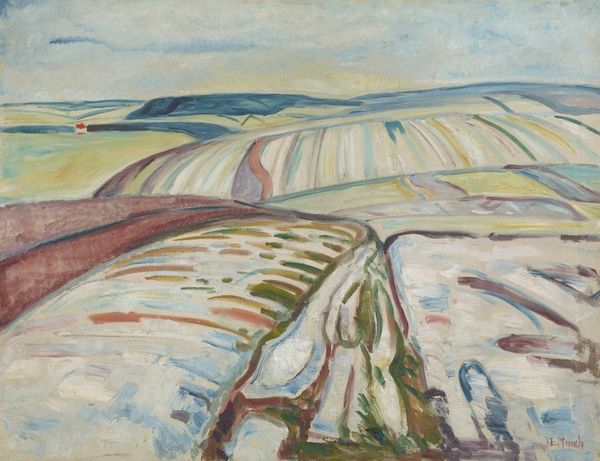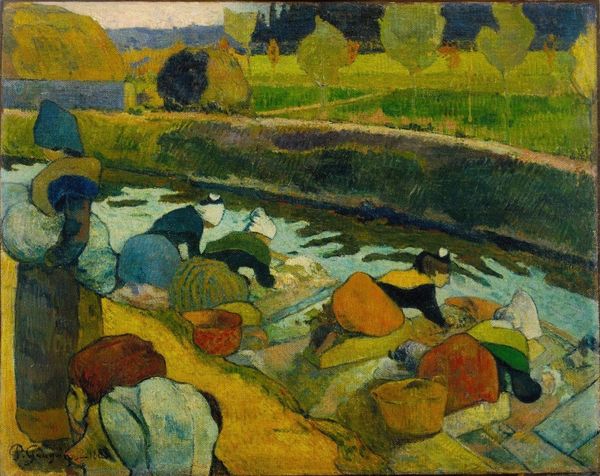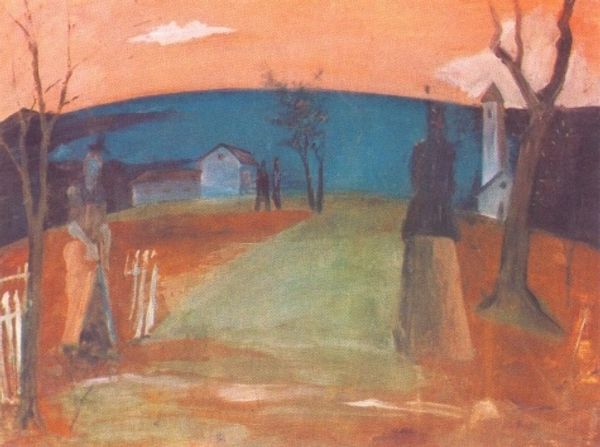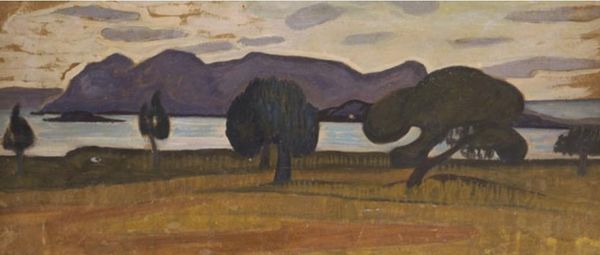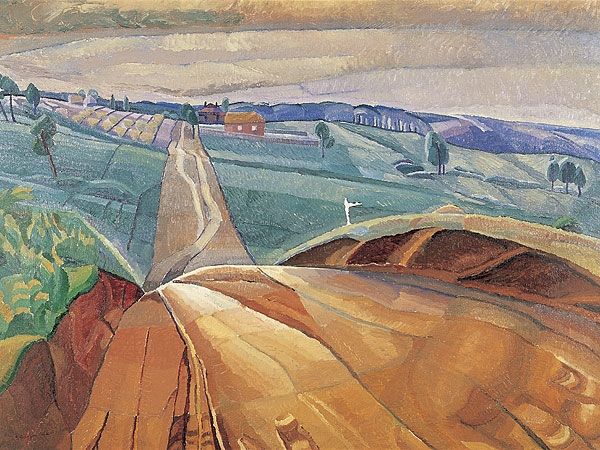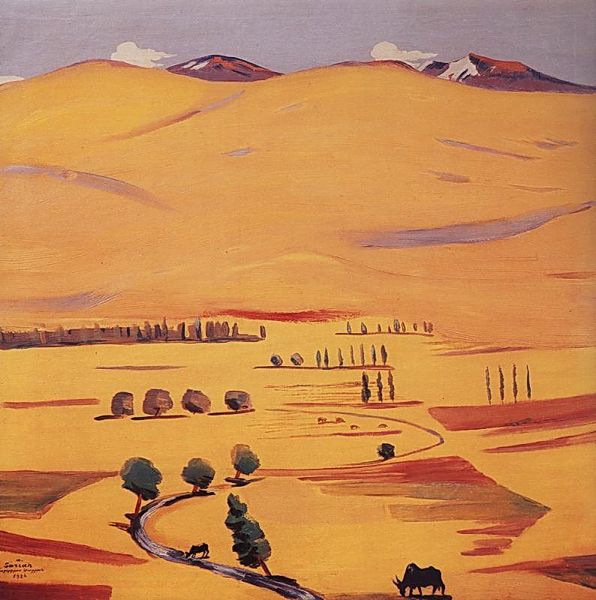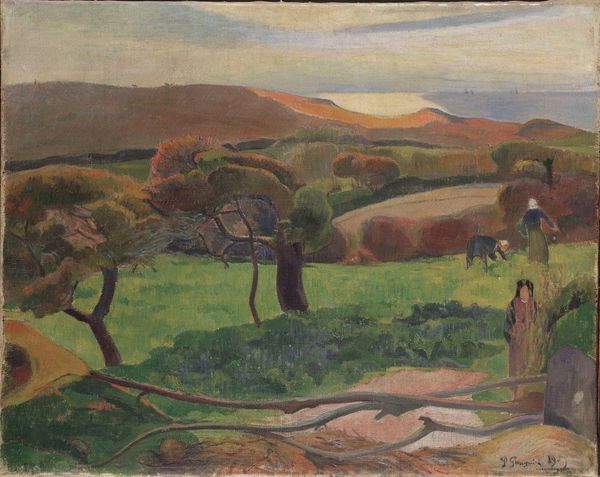
painting, oil-paint
#
water colours
#
painting
#
oil-paint
#
landscape
#
genre-painting
#
post-impressionism
Copyright: Public Domain: Artvee
Editor: This is Émile Bernard’s "Harvest by the Sea," painted in 1891. It's oil on canvas and shows field workers on the coast. The stylized figures and somewhat muted palette give it a rather solemn feel, but there is an interesting compositional balance that evokes decorative harmony. How do you interpret this work formally? Curator: Immediately, the flattening of space strikes me, as does Bernard’s intentional distortion of forms, most noticeably the haystacks. The absence of a clear horizon line disrupts traditional perspective, creating a very surface-oriented composition. It's as if each shape—figure, haystack, coastline—is equally weighted in the overall design. Editor: It does seem to defy the conventional approach to landscape painting. What about his brushwork? Curator: Observe how Bernard applies the paint in broad, relatively uniform strokes, minimizing texture and detail. This flatness contributes to a sense of abstraction. It also pulls the viewer’s focus towards color relationships, specifically the muted tones of the field against the cool hues of the water and sky. Editor: I see what you mean. It’s less about representing the scene realistically and more about how the elements interact on a formal level. Curator: Precisely. Notice also the stark delineation of forms: hard outlines contain swatches of mostly unmodulated colours. Editor: Almost like cloisonné! It’s less of a scene and more of an intricate tapestry of shapes and colors working together. Thanks, seeing the painting through this lens helps me understand Bernard's unique artistic language. Curator: My pleasure. Paying attention to composition helps one decode visual organization, allowing the artwork to communicate on its own terms.
Comments
No comments
Be the first to comment and join the conversation on the ultimate creative platform.
